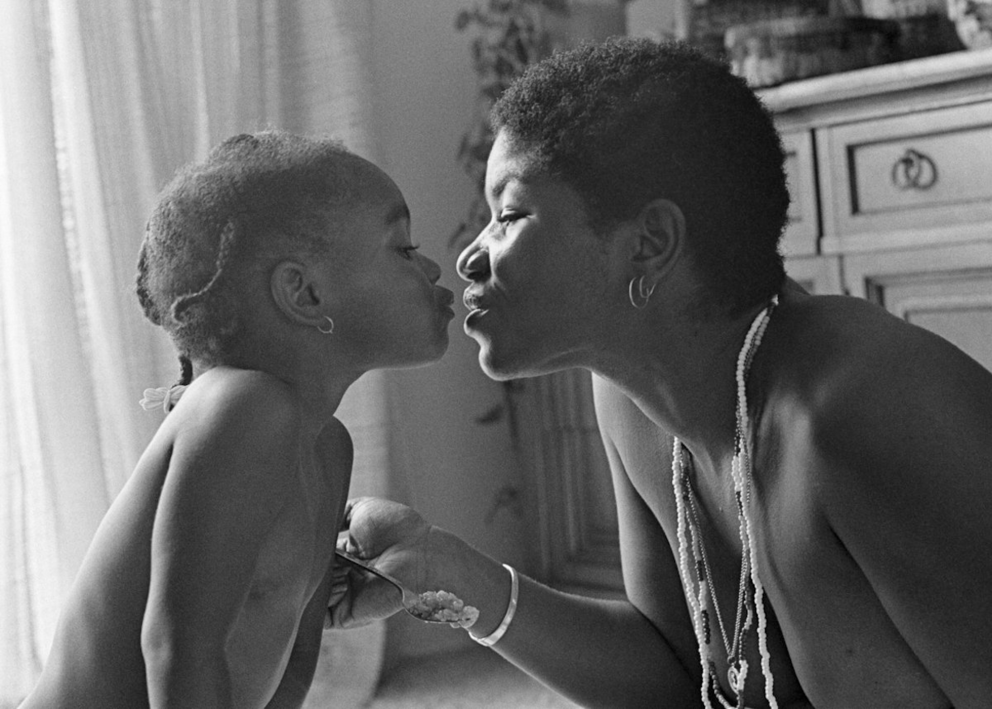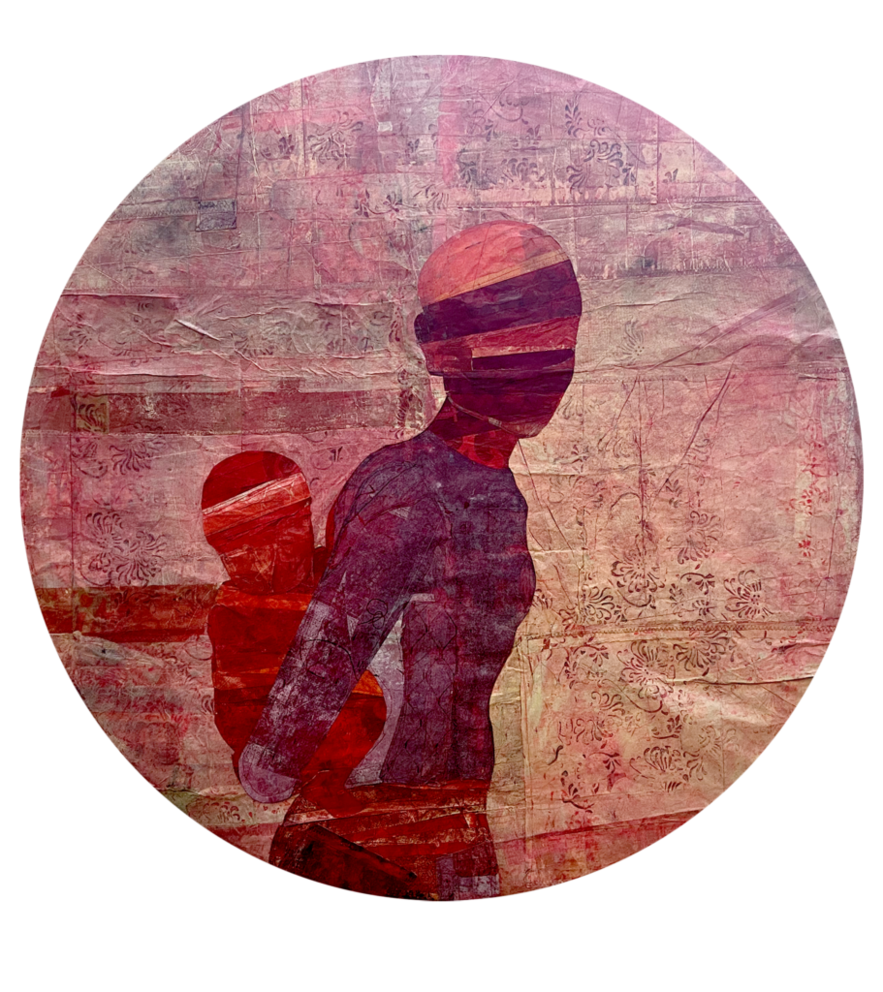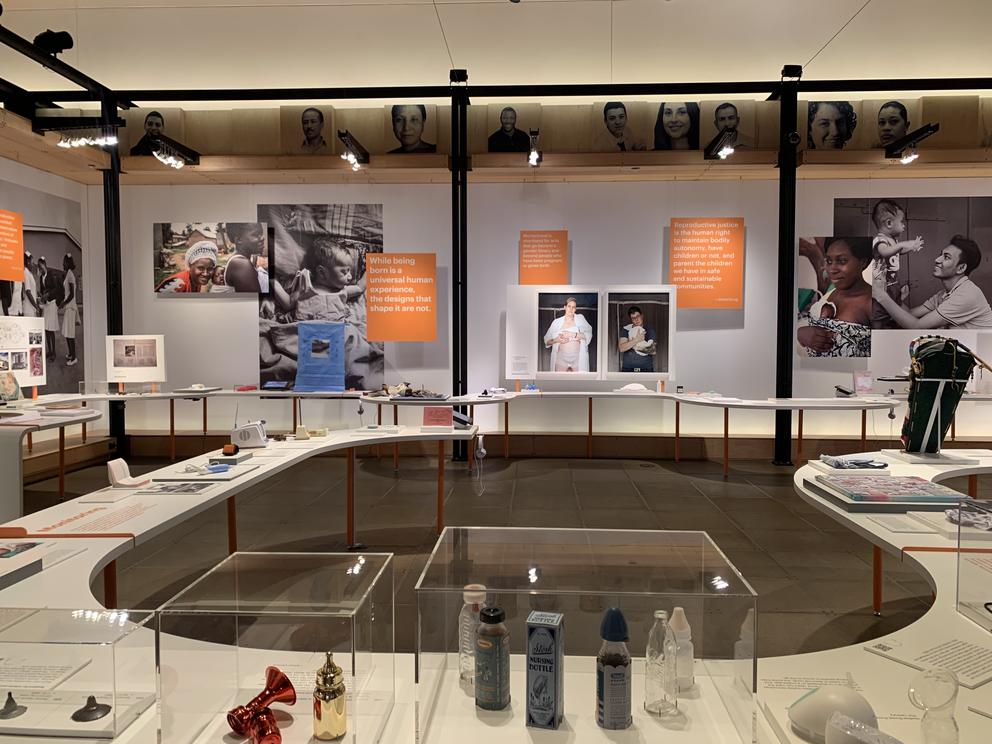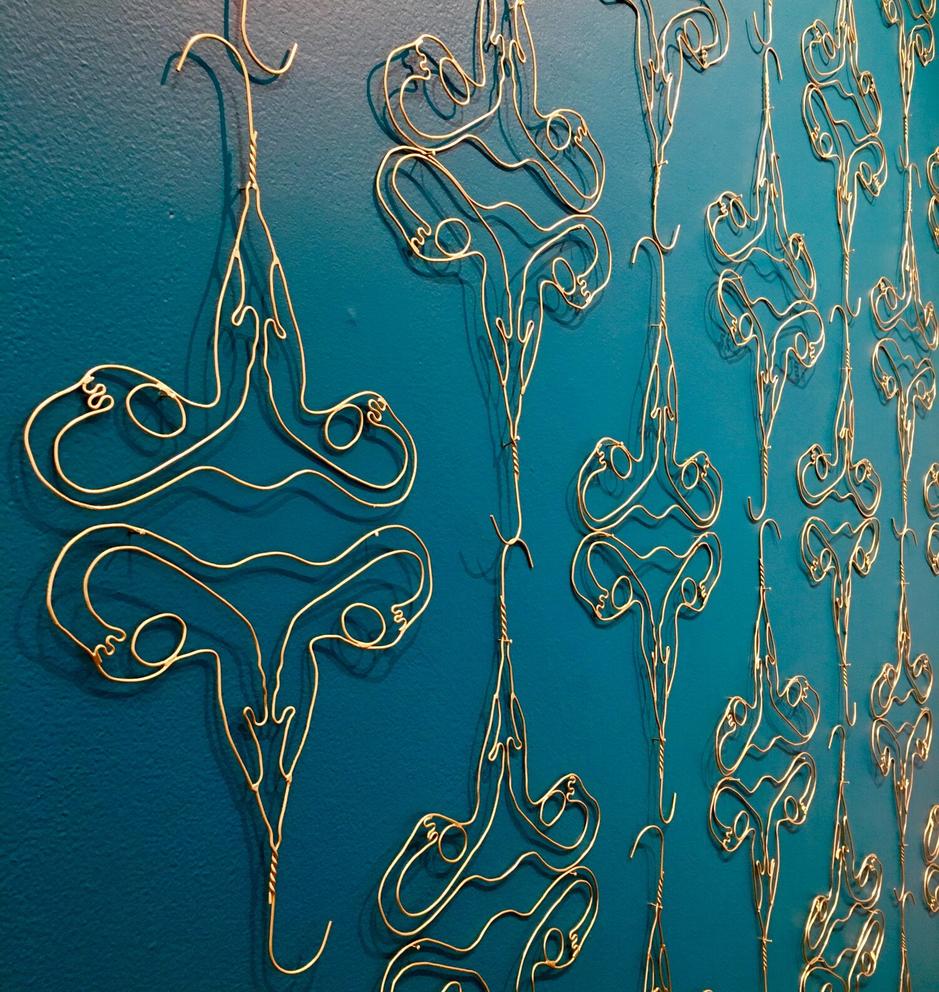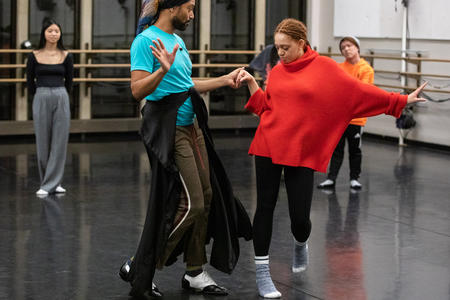“Whether and When,” by Holly Ballard Martz, interrupts the Seattle gray with a Pepto Bismol hue. The cheeky glass uterus is one of the local pieces in the Discovery Center’s new show Designing Motherhood: Things That Make and Break Our Births, on view through Dec. 30. The traveling exhibition explores the concept of motherhood from various perspectives, scientific to emotional to artistic.
“Motherhood is [about] more than just the person who’s pregnant,” says Sarah Bloom, curator of exhibitions at the Discovery Center. “When we talk about all of these issues that are connected to how we build a better world … we can’t talk about them without talking about … the designs that shape and affect every person as they come into this world.”
The Designing Motherhood project started in 2017, when design historians Michelle Millar Fisher and Amber Winick — who had met two years prior at a baby shower — began joint research on objects designed specifically around reproduction. The first exhibition opened in 2020 in Philadelphia, and has since traveled to Boston and now Seattle. Fisher and Winick published a book of the same title in 2021.
An advisory board of seven local organizers was involved in this local installation, including Angela Garbes, Seattle author of Like a Mother: A Feminist Journey Through the Science and Culture of Pregnancy; local midwife Mercedes Snyder; and Dr. Cyril Engmann, a senior director at the global health organization PATH.
“This is an exhibition that focuses on the design of objects, of devices, the design of systems and even the design policies that connect to the human arc of reproduction,” Bloom says.
From Dalkon Shield IUDs to breast pumps to a series of 1970s books about mothers who regret having children (see The Baby Trap: A Devastating Attack on the Motherhood Myth), the objects reflect a wide interpretation of the theme.
Visitors will see more than 200 objects featuring designs that have shaped motherhood over the past 150 years — some expected, like the emergency Plan B “morning after” pill and Fisher Price baby monitors. A few are more surprising, even jarring. Three designs of forceps dating from the 17th century to the modern era, for example, sit next to each other, cold and foreboding tools used to pull babies out of mothers during difficult deliveries.
The universality of motherhood juxtaposed with the term’s diversity of meanings across time and cultures is one of the exhibition’s central themes. Alongside the industrial designs on view — a wooden device to measure dilation; an IUD insertion tool — are works by local artists, including Martz’s glass uterus and pieces by Fumi Amano and Jite Agbro.
“A big part of the story is really the people who have lived experiences, who can share how they've interacted with those systems and those objects,” Bloom says. “The artists who are in this exhibition speak to stories in really good ways. They bring the objects to life.” Each piece was created between 2016 and 2020 amid heightened political tensions around women’s issues.
Walking into the Discovery Center, visitors will first encounter mixed-media artist Agbro’s piece To Whom the Future Belongs (commissioned by the Foundation for its 2020 anniversary exhibition Reflections: 20 Years of the Bill & Melinda Gates Foundation).
Agbro’s take on a classical Madonna shows a silhouette of a woman holding a child on her back, framed by faded floral stamps. Paper and fabrics are layered atop one another to blend textures and warm shades of pink, orange and red. For the viewer, it almost feels like looking out a window at the mother and child during a sunset.
“I wanted to just sort of subtly reference the way that motherhood is varied across the globe, but also how it's the same,” Agbro says. Mothers across different cultures hold their children in different ways, some carrying them in complicated baby carriers on their chests, others swaddling them on their backs, as in Agbro’s work. “The intentions are still the same, the concerns are still the same — even if the circumstances are different,” Agbro adds.
Circumstances are different for all who consider motherhood, which the exhibit demonstrates along a twisting umbilical-cord pathway of displays about everything related to its progressive stages, such as medical exams, breast pumps and postpartum experiences.
But first comes the decision to have children — or not. Designing Motherhood starts with the use of contraception, whether forced onto potential mothers through nonconsensual sterilization or by an autonomous decision. Martz’s artworks focus on the latter, the right to choose.
According to Martz, her window piece “Whether and When” (also commissioned by the Discovery Center in 2020) is a commentary on family planning. Made from laboratory glass, the piece looks scientific, which Martz says represents the medical aspects of family planning, from fertility treatments to hysterectomies. The baby-pink color is reminiscent of gender reveals and baby showers, the stereotypical shade that designates it’s “for girls.” The glass implies fragility, but is balanced with the strength of the steel components.
“Whether or not you have children or choose to have children impacts everything,” Martz says. “It’s emotional, physical, financial, social.”
Martz has another artwork on display called “danger of nostalgia in wallpaper form (in utero).” From afar, it’s stunning: Flourishes of gold wire repeat against a teal-blue backdrop, resembling a vintage wallpaper pattern. Upon closer inspection, a darker truth reveals itself — the steel wire has been contorted into coat hangers, each of which takes the the shape of a uterus and fallopian tubes.
“If you have something that’s really inviting and beautiful and kind of seductive … it gets you to pay attention,” Martz says.
Contemplating motherhood is a familiar place for Japanese-born and Seattle-based artist Fumi Amano, who in her featured piece considers the implications of “to be or not to be” a mother. She recently made a splash at the 2022 Seattle Art Fair off-site show Howl with “Where are you from?,” a giant red rope sculpture of a uterus that encouraged visitors to climb inside.
In this show, Amano comments on the social and physiological pressures experienced by women in their 30s, when biological clocks tick loudly.
In the filmed performance piece “Worries of a 30-year-old single woman: Hysteria,” Amano walks and runs on a treadmill on the median strip of a busy street. She wears a pink helmet and amplifies her voice through a megaphone — shouting things in Japanese like “I’m getting sick of being a woman!” Bystanders are largely indifferent. Some cars honk and one person even records her, but everyone continues with their days as normal.
“Since turning 30, I’ve begun to feel that conceiving a child is true happiness for a woman,” Amano says in the video. But her circumstances make that “true happiness” impossible. “I’m not married. I don’t have kids. I feel as if I haven’t really achieved anything as a woman.”
Amano created the video in 2016 to showcase the frustrations she felt upon turning 30, the expectations she felt weighing on her. On screen, she scrutinizes her relationship with her younger boyfriend, who at the time was not considering marriage or children. (Amano is now married.)
“She comes at it from such a personal perspective,” Bloom says. “Speaking so much of the social pressures placed on women — in some ways, the burdens and the privilege of our reproductive powers.”
Designing Motherhood showcases an unapologetic truth about motherhood: It’s complicated, and approaches to it are as varied as they are personal. With the recent reversal of Roe v. Wade and the subject of reproductive rights sparking urgent political and personal conversations, it couldn’t be more relevant.
“This notion of motherhood and the design that affects our arc of reproduction is an issue that is not just a women’s issue,” Bloom says. “It’s something that affects each and every one of us.”
Get the latest in local arts and culture
This weekly newsletter brings arts news and cultural events straight to your inbox.

